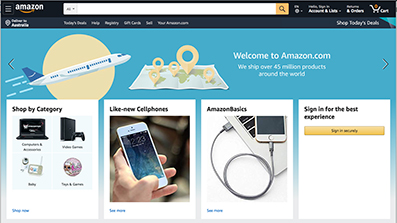Amazon continues its move up the rankings using a combo of marketing and deliveries
- News Feed
- Friday, 07 February 2020
E-commerce giant Amazon’s move to one-day shipping has delivered a strong quarterly result and taken it closer to matching FedEx’s package totals.
Amazon says it made US$87 billion in sales in the last three months of 2019, up 21 per cent on the same period in 2018. Profit also was higher, US$3.3 billion compared to US$3 billion in 2018 even after operating expenses jumped 20-plus per cent to US$83 billion, some of it spent on its Amazon Prime market.
The growth figures are all the more impressive considering Amazon has been a competitor in the fast-delivery market for about six years - and soon will rejoin leaders Microsoft, Apple and Google with a market valuation of US$1 trillion.
 The world’s biggest online retailer, Amazon started making its own deliveries after UPS and FedEx hit problems handling Christmas volumes in 2013. Roll forward six years and Amazon - now with its own airline division in the USA - delivered about half of its own global orders in 2019.
The world’s biggest online retailer, Amazon started making its own deliveries after UPS and FedEx hit problems handling Christmas volumes in 2013. Roll forward six years and Amazon - now with its own airline division in the USA - delivered about half of its own global orders in 2019.
While the growth brought it within touching distance of FedEx - 3.5 billion against Fedex’s 3.8 billion deliveries, it still has quite a way to go to catch market leader UPS, which had volumes of 5.5 billion last year.
Amazon’s presence is however squeezing delivery rates even as e-commerce drives up costs, because the on-line market includes many one-off residential deliveries to small communities, with no multiple address deliveries to compensate.
Amazon so far largely restricts its own in-house deliveries to major cities and towns, leaving rural packages to other carriers.
It also saw FedEx walk away from its US deliveries last year, with UPS picking up much of the slack, though UPS dropped revenue-per-package to do so.
And of course, Amazon also has been prepared to invest in capturing more of the total market.
Founder Jeff Bezos recently said his firm now has more than 150 million Prime accounts globally - up 50 per cent from 2018. Prime members get free delivery (next day in a growing number of cases globally) and access to Amazon’s video service.










